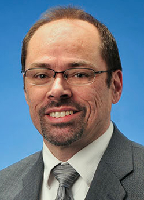[Satnews] Space Systems Loral (SSL) announces that Dr. Matteo Genna has assumed the role of Chief Technology Officer (CTO).

SSL's new CTO, Dr. Matteo Genna.
Dr. Genna’s strong systems engineering and product development background, along with his visionary perspective, have advanced SSL’s capabilities, both in its core communications satellite market and in its growth market, with innovations in robotics, small satellites and advanced systems for space infrastructure and exploration.
Dr. Genna joined SSL nearly 20 years ago as a Systems Engineer in the Research and Development group where he contributed to advancing the design of SSL’s highly successful 1300 satellite platform, which celebrated its 100th launch last year. He has contributed to a broad range of innovations, ranging from avionics to electric orbit raising, keeping the 1300 at the forefront of today’s technology.
As a Manager in the Advanced Systems Group, Dr. Genna led teams responsible for designing SSL’s satellites and developing novel solutions for integrating hosted payloads. In 2014, Dr. Genna was named Vice President of Mission Assurance and Chief Engineer. In this role, he was accountable for the design, performance, reliability, and quality of every SSL-built satellite. In his new role, Dr. Genna is responsible for advances that are enabling SSL to collaborate with NASA and DARPA. This is reflected in programs such as Dragonfly, for robotic satellite assembly on orbit, and Psyche, for a spacecraft to explore an asteroid.
Dr. Genna holds a Bachelor of Science degree in Physics from the University of California, San Diego, and a Ph.D. in Physics from the University of California, Berkeley.
“Dr. Genna brings a critical combination of technical expertise, business leadership, and vision into the future of space technology,” said John Celli, president of SSL. “As CTO he is driving our focus on flexibility and standardization for GEO satellites, in addition to developing new platforms for our next generation space missions.”


